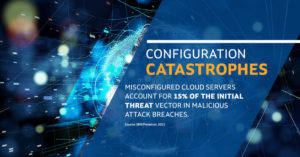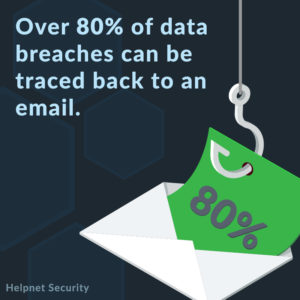75% of my new customers call me after an incident has happened. Stop being a victim, and be productive. #disaster #BDR #hacker
Tuesday, November 22, 2022
Friday, November 18, 2022
Trust – Small Business Nightmare
Trust – Small Business Nightmare
The Case for Trust-Building as a Small Business (It’s Not Just for Enterprises)
There is a strong connection between trust and prosperity. In fact, when trust levels are high, businesses tend to grow faster. According to McKinsey and Company, Harvard Business Review, Forrester Research and many other reputable organizations, trust is the connecting fabric upon which innovation and business success are built. You might think that trust-building isn't crucial for small to medium-sized businesses (SMBs), but it is critical if you want to achieve your business objectives and keep your employees and customers satisfied. While you might not expect a technology company like ours to discuss trust, we care about your business objectives and believe it is essential for your people, processes and technology.
You might think that trust-building isn't crucial for small to medium-sized businesses (SMBs), but it is critical if you want to achieve your business objectives and keep your employees and customers satisfied. While you might not expect a technology company like ours to discuss trust, we care about your business objectives and believe it is essential for your people, processes and technology.Building trust is essential for any organization, whether it's a startup or a Fortune 500 company. It gives employees the confidence to take chances and innovate, gives customers the confidence to buy from and collaborate with you, and gives partners the confidence to do business with you. But how do you create a foundation for trust?
Leverage processes and technology
Building trust is not easy, and it often takes time and effort to develop. Luckily, there are a few things companies can do to succeed.
Integrate technologies
Technology integration is one of the most important considerations for businesses today. Not only do neatly integrated technologies save time and serve as a reliable foundation, they can also reduce friction within your company. Inefficient or incompatible technologies can create chaos and confusion, slowing down workflows and damaging productivity.
If you take the time to select and integrate the right technologies, it can make all the difference in terms of organizational efficiency and success.
Deploy thoughtful processes
Thoughtful processes that consider the user experience can reduce confusion and opportunities for conflict and make it easier for employees to work for you. Friction arises when an individual’s expectations do not match the actual experience. When this occurs, it can lead to conflict as people attempt to shift responsibility or blame.
Thoughtful processes can help ensure that everyone’s expectations are met, minimizing the chances of a conflict.
Secure data
When it comes to organizational data breaches, customers and employees are quick to lose trust in companies that can’t protect their sensitive data. Implementing measures to secure your customer and employee data is one way to help rebuild trust. In doing so, you are not only protecting your customers and employees, but also your bottom line.
Volkswagen Group of America recently confirmed a data breach that occurred in 2021.* The data breach, which affected approximately three million customers, resulted in the theft of customer names, email addresses and vehicle identification numbers. The company had to spend a lot of money on recovery, but how many SMBs can afford that?
What's more concerning is that the Volkswagen data breach is just the latest in a long series of cybersecurity incidents, with more likely to follow in the coming years.
Choose the right partner
Since trust-building can be so challenging for SMBs to handle alone, collaborating with a managed service provider (MSP) like us is the best option. MSPs can help with tasks such as disaster recovery, compliance, security and much more. Working with an MSP such as us will allow you to concentrate on your core competencies, safe in the knowledge that your customers' data is secure.
Feel free to reach out for a no-obligation consultation.
To dig deeper into the topic, download our infographic titled “Why Businesses Should Make Trust-Building a Priority” by clicking call us at (508)381-8307 or email us at sales@avantinetworks.com.
https://avantinetworks.com/trust-small-business-nightmare/
Tuesday, November 1, 2022
Data Loss Disasters Come in Many Forms
Data Loss Disasters Come in Many Forms
If we’ve learned anything from the COVID-19 pandemic, it’s that we don’t have it all figured out. Not only are we vulnerable as a species, but so are the systems, processes and devices we’ve built. Natural and human-made disasters as well as other contingencies can still cause significant damage and bring businesses to a grinding halt.
Now is the time for companies, both big and small, to take steps to ensure business continuity and natural-disaster resilience. In this increasingly digitized world, backup and disaster recovery (BCDR) must be a top priority for businesses because the repercussions of even a single data loss incident could be fatal.
Imagine if you were a health service provider, for example, and you ended up losing all patient data after a fire burned away your on-premises backup device. An incident like that could cause irreparable damage to your business.
In this post, we will break down different types of data loss disasters, how to prepare for them and how to leverage BCDR to meet and maintain regulatory compliance obligations.

The Many Forms Data Loss Can Take
From natural disasters like hurricanes and floods, to cybersecurity threats such as malware infections, data loss disasters come in many forms. Let’s analyze each type and learn how to plan and prepare for them.
Natural Disasters
This covers everything from storms, hurricanes and floods to fires, tsunamis and volcano eruptions. In most cases, you can expect infrastructural damages, power failure and mechanical failures, which could then lead to data loss.
Hardware and Software Malfunctioning
Software and hardware failure can cause data loss if you don’t have BCDR measures in place. It could be due to bugs, glitches, configuration errors, programmatic errors, component failures or simply because the device is at its end of life or the software is outdated.
Unforeseen Circumstances
Data loss can happen due to random, unexpected scenarios. For instance, a portable hard disk held by one of the employees could get stolen, your server room may have a water leak because of a plumbing issue or there could even be a pest infestation in one of your data centers.
Human factor
Aberdeen Research found that everyday human errors cause nearly 64% of data loss incidents. These errors range from accidental file deletions and overwriting of existing files, to naming convention errors, forgetting to save or backup data, or spilling liquid on a storage device.

80 percent of breaches can be traced to email
Cyberthreats
Your business may fall prey to malware, ransomware and virus attacks, which could leave your data and backups corrupt and irrecoverable. Additionally, data loss could be caused by malicious insiders with unauthorized access, which often goes under the radar. A recent study shows that employee action is involved in up to 23% of all electronic crime events.
How to Plan and Prepare for Data Loss Disasters
As you can see, data loss disasters can manifest in a wide variety of ways. The key is to be proactive and plan for these disasters. Don’t wait for disaster to strike. Here are a few tips to help you get started:
- Perform a business impact analysis and draft a plan on how to recover key functions in the event of a disaster.
- Define an acceptable Recovery Point Objective and Recovery Time Objective.
- Set up a business continuity team that will take charge during a disaster.
- Train your staff in backup management and data recovery.
- Back up critical business data off-site and on the cloud.
- Conduct threat analysis and define recovery steps for each threat.
- Perform frequent security audits and mock drills to review the efficiency of your disaster response.
- Keep the plan up to date and make sure everyone on the team knows their role.
- Banking information should be stored in a way that it can be accessed quickly and securely in the event of a disaster.
- Invest in a robust backup and disaster management solution that is frictionless, secure, offers SaaS data backup and doesn’t require extra hardware or network bandwidth.
- Make sure you have a remote monitoring tool.
- Employ waterless fire protection systems, moisture sensors, surge protectors and backup battery systems.
Leverage BCDR to Achieve and Maintain Regulatory Compliance Obligations
Data loss prevention is not the only advantage of taking backup and disaster recovery seriously. Getting a robust BCDR solution that offers constant monitoring of backup activity, advanced threat detection, immutable audit logs, access control requirements, data retention rules, and infrastructure or storage controls will make it much easier for you to meet compliance obligations applicable to your business.
Data loss disasters are inevitable. But you can minimize their impact by making BCDR a critical component of your business continuity and resilience plans. Not sure how to get started? We can help. Contact us to get more information on how to build a reliable disaster recovery plan.
Everyday human errors account for up to 64% of data loss incidents. Employees inevitably delete the wrong email, contacts, or critical configurations.
https://avantinetworks.com/data-loss-disasters-come-in-many-forms-2/
Disaster Recovery
Disaster Recovery
-
Disaster Recovery
-
Disaster Recovery
-
Disaster Recovery
